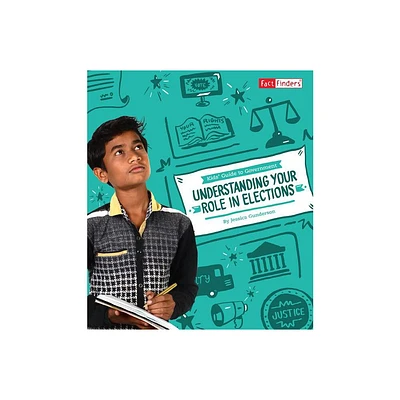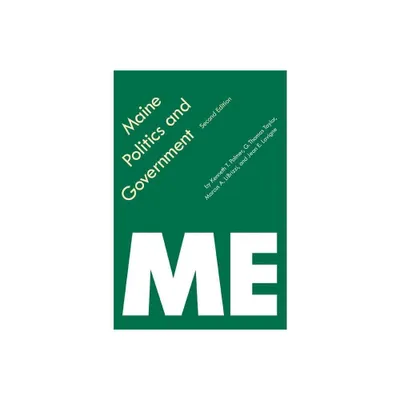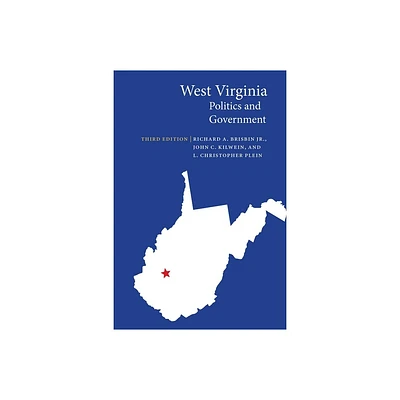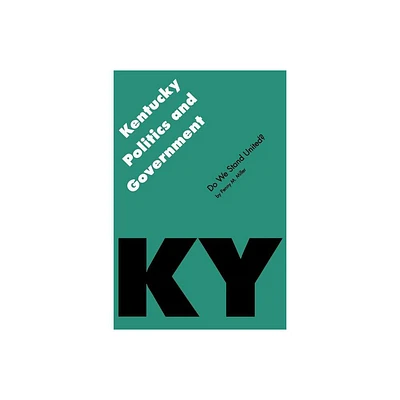Home
Afghanistan: Politics, Elections, and Government Performance
Loading Inventory...
Barnes and Noble
Afghanistan: Politics, Elections, and Government Performance
Current price: $19.95


Barnes and Noble
Afghanistan: Politics, Elections, and Government Performance
Current price: $19.95
Loading Inventory...
Size: OS
*Product Information may vary - to confirm product availability, pricing, and additional information please contact Barnes and Noble
The capacity, transparency, legitimacy, and cohesiveness of Afghan governance are crucial to Afghan stability as U.S.-led NATO forces exit Afghanistan by 2016. The size and capability of the Afghan governing structure has increased significantly since the Taliban regime fell in late 2001. But, the government remains rife with corruption and ethnic and political tensions among its major factions are ever present.
Hamid Karzai has served as president since late 2001; he is constitutionally term-limited and will leave office after a new president takes office. The first round of presidential elections took place on April 5, 2014, and the results required a June 14 runoff between Dr. Abdullah Abdullah and former Finance Minister Ashraf Ghani. The runoff increased ethnic tensions between Pashtuns, Afghanistan's largest group represented by Ghani, and the second-largest group, the Tajiks, with whom Abdullah is identified. Amid accusations by Abdullah of a fraud-inspired large increase in turnout between the two rounds, preliminary results released July 7 showed Ghani ahead 56% to 44%. Secretary of State John Kerry has visited Afghanistan twice, brokering agreement by the two candidates to a recount all 23,000 ballot boxes and formation of a post-election unity government. The recount reportedly did not change the runoff vote outcome, but announcement has been delayed to enable completion of negotiations on the power-sharing agreement. The long delays in new leadership being inaugurated has complicating U.S. and NATO planning for a post- 2014 international mission to train Afghan forces and conduct counterterrorism operations.
The election outcome is consequential because the constitution concentrates substantial power in the presidency, in large part through powers of appointment at all levels. The apparent winner of the runoff, Ghani, apparently does not want his powers as president diluted. At the same time, any Afghan leader's actual authority is constrained by an informal power structure consisting of regional and ethnic leaders that has always been at least as significant a factor in governance as the formal power structure. The faction leaders lead or can recruit armed fighters, and several are reviving their militias in concert with the ongoing drawdown of international forces. The enhanced influence of faction leaders is increasing instances of arbitrary administration of justice and human rights abuses. In addition, there has been scant progress in reducing widespread nepotism and other forms of corruption. The United States has helped establish anti-corruption institutions, but these bodies have faltered from lack of support from senior Afghan leaders who oppose prosecuting political allies.
International observers assert that there have been significant gains in civil society, women's rights, and media freedoms since 2001. Those gains have come despite the persistence of traditional attitudes and Islamic conservatism in many parts of Afghanistan-attitudes that cause the judicial and political system to tolerate child marriages and imprisonment of women who flee domestic violence. Islamist influence and tradition has also frequently led to persecution of converts from Islam to Christianity, and to curbs on the sale of alcohol and on Western-oriented media programs. Afghan civil society activists, particularly women's groups, assert that many of these gains are at risk as international forces depart and as faction leaders and insurgents assert themselves.
Hamid Karzai has served as president since late 2001; he is constitutionally term-limited and will leave office after a new president takes office. The first round of presidential elections took place on April 5, 2014, and the results required a June 14 runoff between Dr. Abdullah Abdullah and former Finance Minister Ashraf Ghani. The runoff increased ethnic tensions between Pashtuns, Afghanistan's largest group represented by Ghani, and the second-largest group, the Tajiks, with whom Abdullah is identified. Amid accusations by Abdullah of a fraud-inspired large increase in turnout between the two rounds, preliminary results released July 7 showed Ghani ahead 56% to 44%. Secretary of State John Kerry has visited Afghanistan twice, brokering agreement by the two candidates to a recount all 23,000 ballot boxes and formation of a post-election unity government. The recount reportedly did not change the runoff vote outcome, but announcement has been delayed to enable completion of negotiations on the power-sharing agreement. The long delays in new leadership being inaugurated has complicating U.S. and NATO planning for a post- 2014 international mission to train Afghan forces and conduct counterterrorism operations.
The election outcome is consequential because the constitution concentrates substantial power in the presidency, in large part through powers of appointment at all levels. The apparent winner of the runoff, Ghani, apparently does not want his powers as president diluted. At the same time, any Afghan leader's actual authority is constrained by an informal power structure consisting of regional and ethnic leaders that has always been at least as significant a factor in governance as the formal power structure. The faction leaders lead or can recruit armed fighters, and several are reviving their militias in concert with the ongoing drawdown of international forces. The enhanced influence of faction leaders is increasing instances of arbitrary administration of justice and human rights abuses. In addition, there has been scant progress in reducing widespread nepotism and other forms of corruption. The United States has helped establish anti-corruption institutions, but these bodies have faltered from lack of support from senior Afghan leaders who oppose prosecuting political allies.
International observers assert that there have been significant gains in civil society, women's rights, and media freedoms since 2001. Those gains have come despite the persistence of traditional attitudes and Islamic conservatism in many parts of Afghanistan-attitudes that cause the judicial and political system to tolerate child marriages and imprisonment of women who flee domestic violence. Islamist influence and tradition has also frequently led to persecution of converts from Islam to Christianity, and to curbs on the sale of alcohol and on Western-oriented media programs. Afghan civil society activists, particularly women's groups, assert that many of these gains are at risk as international forces depart and as faction leaders and insurgents assert themselves.


















